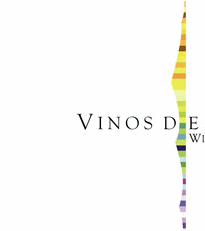Samoa: Samoa Tourism Profile 2012
2012/03/29
Samoa Tourism Profile 2012
Analyse of the sector 30/11/2010
Someone’s Loss Is Someone Else’s Gain
Someone’s Loss Is Someone Else’s Gain
The Samoan tourism industry has been the direct beneficiary of the uncertainty and political instability in Fiji, which remained volatile over 2009. As a result Samoa attracted tourists who were inclined to go to Fiji but feared the dangerous situation after the 2007 military coup, and considered Samoa as a viable alternative. Samoa also gained from the economic slowdown, when consumers were attempting to save money, since Samoa is also seen as a more affordable version of Fiji.
Samoa Attempts to Move Upscale
The tourism infrastructure in Samoa is considerably undeveloped, and much of the accommodation made up of “beach fales” or huts. Although this plays a significant role in creating the brand of Samoa as a relaxed destination and is an important part of its appeal, the strategy has not been especially profitable for Samoa. The destination is therefore attempting to appeal more to more affluent tourists, and business travellers, attempting to position itself as a destination for business conferences. The possible development of an upscale resort development by the South Pacific Development Group, near the village of Sasina, and featuring a marina, golf course and wedding chapel, is another example of this strategy, should the project ever get off the ground.
“Customary Land Tenure” Traditions Weakened
The approval of tourist developments in Samoa has always been a slow process, largely due to the traditional of “Customary Land Tenure”, based on the concept that the land is collectively owned by the extended family and not just one individual. The passing of the Land Titles Registration Act 2008 into law however has simplified this process, and as a result, the development of tourist operations is likely to speed up. The high number of “beach fales” has been one result of the “Customary Land Tenure” since they are run by the extended family. With this no longer needing to be the case, the focus shall likely shift to hotels and resorts.
Nature Has Taken on Samoa
Samoa defied global recession and the outbreak of H1N1; however the tourism industry had to surrender to nature. Samoa Islands were hit by an earthquake and tsunami on 30 September 2009. The south east of the Upolu Island sustained extensive damage. Roads, power lines, the water supply, resorts and other holiday accommodation were destroyed. Fortunately the capital, Apia, being on the other side of the island, was spared. Since much of the accommodation was “beach fale” in style, reconstruction was a simple process, and the Samoan tourism industry was ready for visitors by the time the 2010 tourism season started.
Samoa Lays the Foundations for Growth
Samoa has seen significant growth in tourism in the last two years of the review period. The aim is to increase tourist arrivals by up to 50% over the forecast period. In order to achieve this ambitious goal, Samoa Tourism Authority has launched, Samoa Tourism Development Plan 2009-2013. The plan will focus on the core markets of Australia, New Zealand and American Samoa, whilst China and Japan are considered as emerging markets to capitalise on.
- Samoa News
-
- AFGHANISTAN: UNWTO: International tourism – strongest half-year results since 2010
- AFGHANISTAN: Higher earning Why a university degree is worth more in some countries than others
- AFGHANISTAN: Revised IMF forecasts signal gloom on global economic outlook
- AFGHANISTAN: Oxfam Study Finds Richest 1% Is Likely to Control Half of Global Wealth by 2016
- SAMOA: Climate change challenges
- SAMOA: ADB Provides $500,000 to Samoa for Cyclone Relief
- Trending Articles
-
- SOUTH AFRICA: Nigeria and South Africa emerge from recession
- WORLD: How fair is our food? Big companies take reins on sourcing schemes
- ANGOLA: Angola: Elections / 2017 - Provisional Data Point Out Qualified Majority for MPLA
- BAHRAIN: Bahrain issues new rules to encourage fintech growth
- NIGERIA: Nigeria has been one of the hardest-hit economies due to its over-dependence on oil
- KENYA: Kenya's overall inflation rate rises by 8 pct in August










